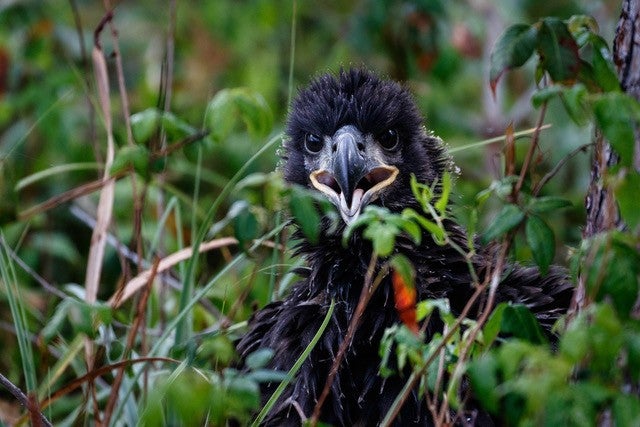
La página que intenta visitar sólo está disponible en inglés. ¡Disculpa!
The page you are about to visit is currently only available in English. Sorry!

With around 750 EagleWatchers in our program, there are bound to be similarities among them (beyond having a passion for Bald Eagle monitoring). We caught up with two EagleWatchers at different points in their volunteering careers: a veteran and a freshman, and we were surprised to learn how much they had in common.
Jerry Hook is a veteran EagleWatcher in Southwest Florida. Five years ago, he was out birding at Pine Island when he met EagleWatcher Michele Murphy looking for eagles. They talked about their shared interest in the species, and Murphy efectively recruited him to EagleWatch. Hook and Murphy remain friends, and they share data about the nests in their area.
Pam Miller became an EagleWatch volunteer in December 2024. Like Hook, she came across an EagleWatcher in her area: While out cycling in her neighborhood, she saw a car with an Eaglewatch magnet on the door. A lifelong bird nerd, she went
home and eagerly looked up the program online, and the rest is history. She submitted her first report on December 30.
Hook and Miller both watch multiple nests. Hook’s record is 17 nests in a season, though after Hurricanes Ian, Helene, and Milton, his most recent count is 14. All are within eight miles of his home. Miller monitors four nests, the farthest about ten miles from her home.
The geography of Hook and Miller’s regions is about as different as it can get in Florida. Hook observes nests on Pine Island, a large island made up of rural and agricultural land in Lee County on the Gulf Coast. Miller lives in rapidly urbanizing Seminole County, home to the Little Big Econ State Forest and part of the Econlockhatchee River in Central Florida. Both volunteers cite the same issue as the most challenging thing about being an EagleWatcher, the reality of development causing habitat loss for Bald Eagles. Additionally, hurricanes pose an additional threat to large nesting trees.

EagleWatch is so much more than just watching nests. For most volunteers, it’s the eaglets inside those nests that make it all worthwhile. “I’ll never forget the first time I saw the head of an eaglet fop over the rim of the nest,” Miller says. The happiest moment of her freshman season was seeing an eaglet venture outside of the nest to a tree branch, hopping around and fapping its wings in preparation for fight lessons. She often brings her husband with her to monitor nests, and it has been fun for them to do together. One of her nests is on an alpaca farm, adding even more animal viewing to the experience. With this first season under her belt, Miller says she’s ready to grab her binoculars and spotting scope and start a new season.
This story originally appeared in the 2024-25 EagleWatch Annual Report.

The Audubon Center for Birds of Prey and the Avian Research and Conservation Institute are embarking on a study to better understand Bald Eagle migration and habitat use.

EagleWatch Program Manager Shawnlei Breeding reflects on a year of challenges and resilience for Florida's Bald Eagles.

EagleWatch volunteers are often the first ones to notice when an eaglet has fallen out of its nest, and thanks to the programs wide network, we are also able to find foster nests when the need arises.